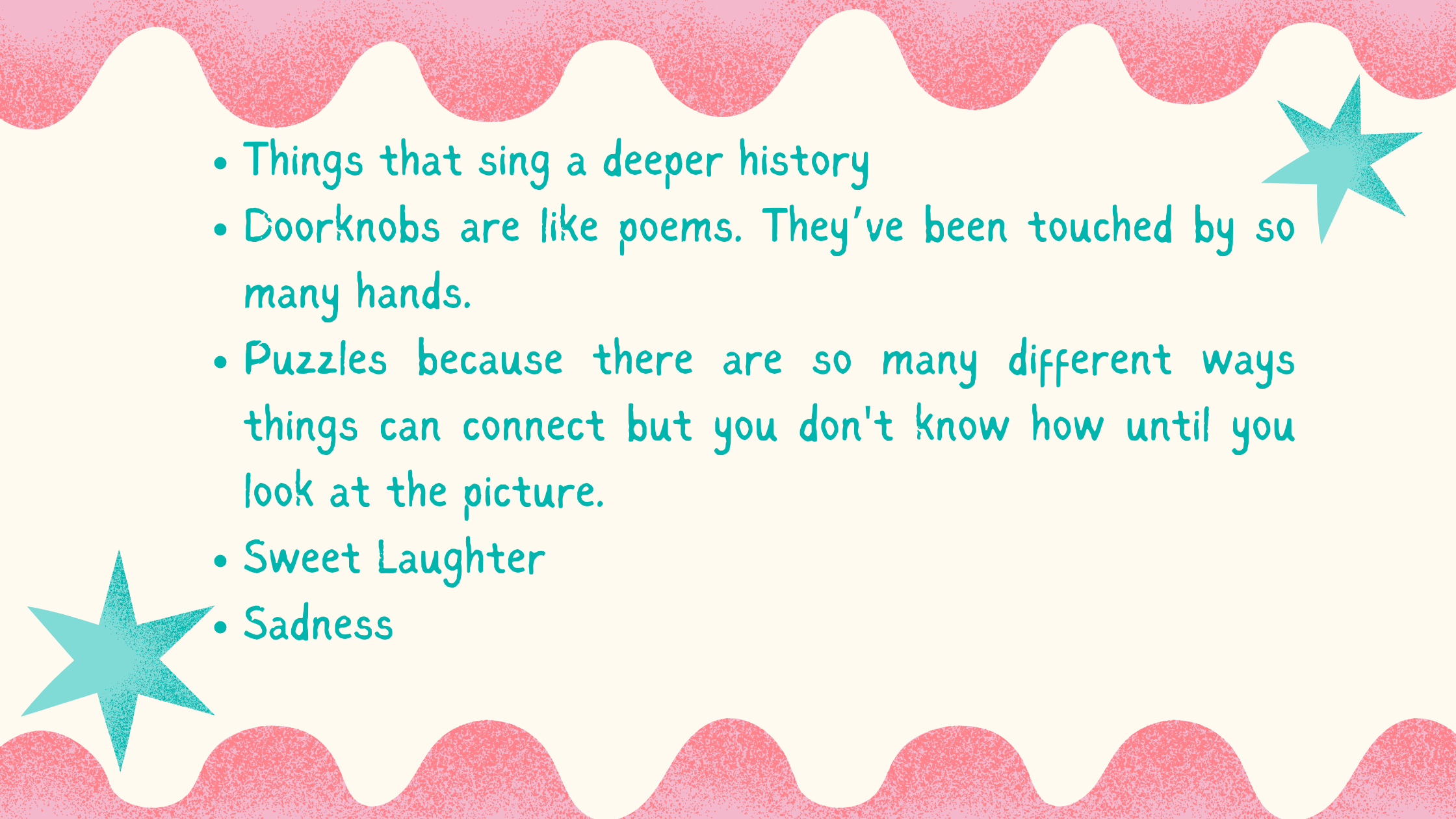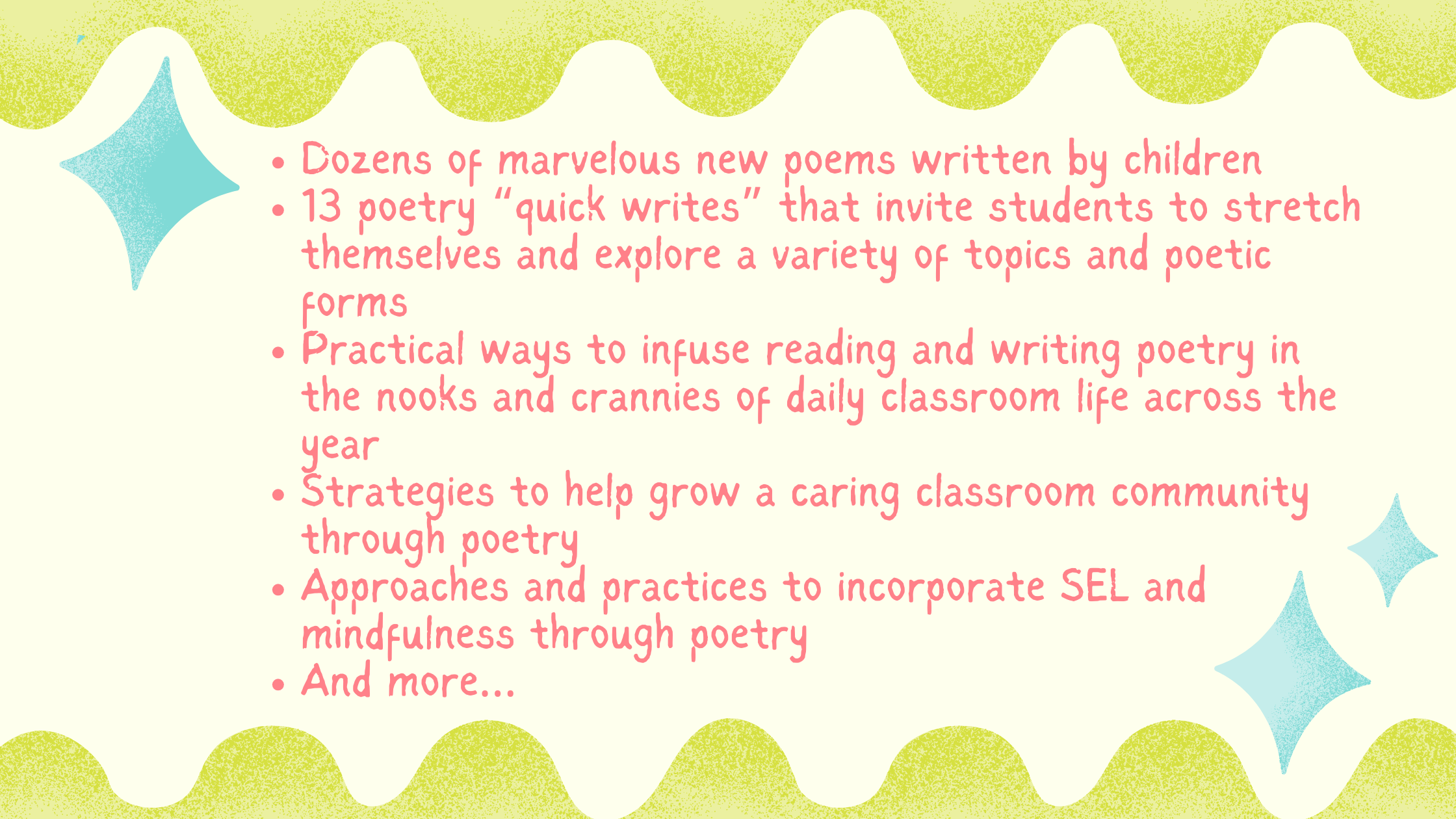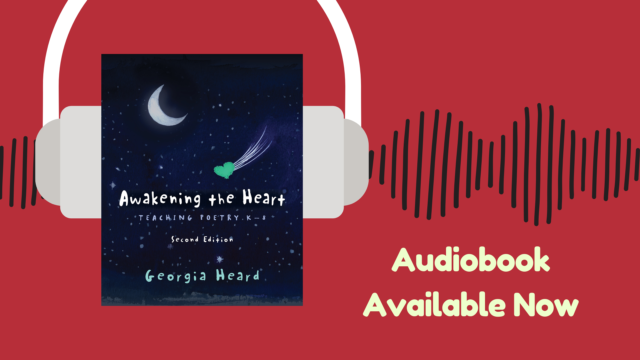
Editor's note: This post was originally published in October 2023.
***
During the twenty years since I wrote the first edition of Awakening the Heart, I have seen the transformational power of poetry. I've experienced it in my own life, and I've seen it in schools across the United States and around the world — from farm schools in Iowa to the classrooms of New York City to International Schools in Jakarta and Bangkok.
A lot has changed in education in the last twenty years. During a period in history when some school communities are facing more restrictions than ever before, it’s crucial that schools provide opportunities to celebrate and value children’s varied identities, and to invite multiple perspectives and diverse voices into the classroom.
Unfortunately, testing pressure and increasingly crowded curricula have caused some schools to relegate poetry to the margins of the classroom, sending the message that imagination is less valuable than other ways of knowing.
What hasn’t changed is my absolute belief that we need to honor and nurture children’s wild imaginations through poetry.
We need poetry now more than ever.
Not just during times of grief and heartache, but every day. Poetry can help us live our daily lives in deep, knowing and authentic ways. It can be the doorway into literacy for so many children, and a pathway to knowing how we feel, learning about who we are, and connecting with others and the larger world.
Children are natural poets. As are we all, when we speak authentically. The way you talk to your loved ones every day and night, tucking your children into bed, the first words you say to your partner when you wake up in the morning; the intimacy of your voice when having a cup of coffee with an old friend – that’s the stuff of poetry.
So how do we teach poetry? I’m not even sure that teach is the right word. Maybe the question should be instead: How do we infuse poetry into our classrooms? How can we be sensitive to and supportive of children’s natural poetic sensibilities? How do we create safe spaces for vulnerability, for students to share their interior lives? How do we create a poetry environment – a space either physical or virtual – that encourages expression and creativity, that supports equity and inclusion and that respects and honors each student’s unique perspective?
In a virtual poetry workshop at the beginning of the pandemic, I invited fifth grade poets in Connecticut to look around with poet’s eyes. Seeing the world with poet’s eyes and a poet’s heart is not about finding a topic – it’s about polishing the film of familiarity and approaching life with a “wide-awakeness,” as Maxine Greene writes. “Wide-awakeness”, according to Greene, “comes through being alive, awake, curious, and often furious.” (Greene, 1977)
For the fifth-grade poets, despite being stuck at home in the midst of the pandemic, poetry shimmered all around them. Here is a compilation of where they found poetry:

Although this new version of Awakening the Heart rests on the same belief that children are natural poets and that poetry in the classroom is essential, life-changing and transformative, it contains a multitude of new thinking and material:

My thinking and practice of teaching poetry has been stretched and shaped by hours, days, months and years listening to and observing children in the classroom. Their poetic wisdom has informed every word of the original edition of Awakening the Heart as well as this new edition.
My hope in writing this second edition is to encourage all teachers to infuse their classrooms with poetry, to trust that it will open imaginative doors for all students, and to help us realize that poems are so much more than a genre study or a way to analyze text for a reading test – rather, poems are, as Mary Oliver describes: “… not words, after all, but fires for the cold, ropes let down to the lost, something as necessary as bread...” (Oliver, 1994).
Listen to Georgia Heard on the Heinemann podcast talk about the importance of poetry and the new edition.
How do we infuse poetry into our classrooms? This new edition of Awakening the Heart stands on the shoulders of the original edition as a roadmap for answering this question. It aims to keep the heart in teaching poetry and to help us realize that poems are so much more than a genre student or a way to analyze text for a reading test. Throughout the text, Georgia Heard threads the voices of young and well-known poets together to illustrate the power and joy of poetry. It offers useful tools, examples, and stories for teachers and instructors to translate into their own communities.



